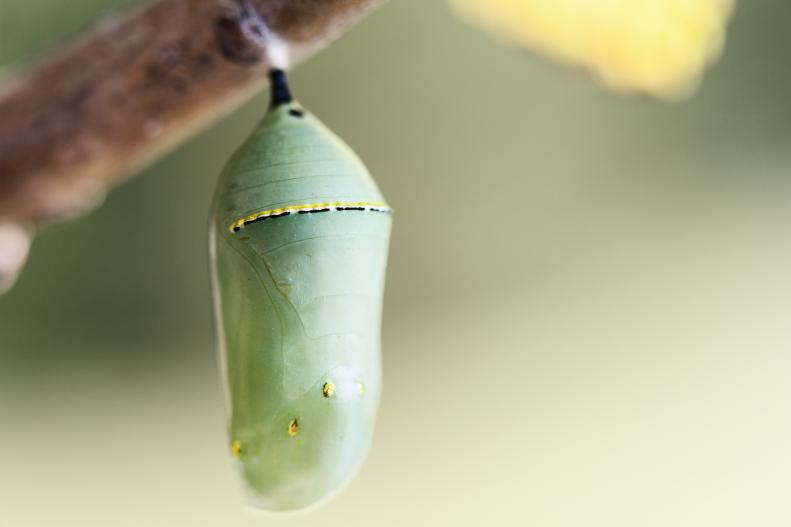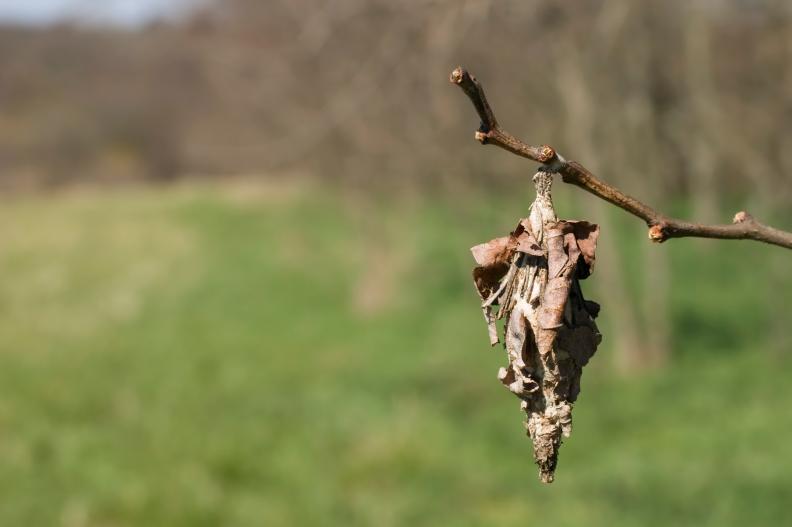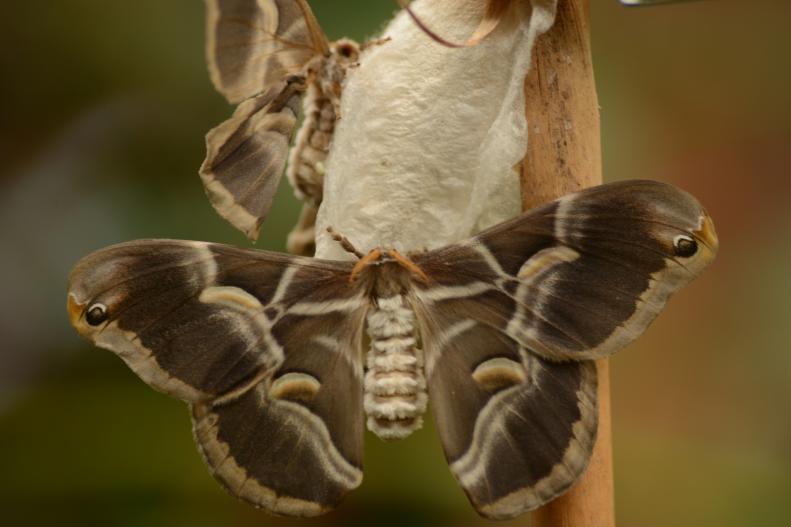1 / 14
Photo: skhoward
What is a Cocoon?
Many insects create a cocoon for protection during an early stage of development, called the pupal stage, in which they dramatically transform from an adolescent larva (such as a caterpillar) to their adult form (such as a butterfly). This is called metamorphosis. When encountering cocoons in your landscape and garden, it’s important to identify the cocoon type to be sure you’re not harming a potentially beneficial and beautiful insect that’s part of your landscape’s ecosystem. Insects typically start the pupal stage in fall and metamorphose over winter, emerging as an adult in spring. The structure shown here, technically called a chrysalis (more on that in a bit), houses a developing butterfly.









